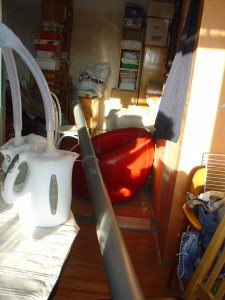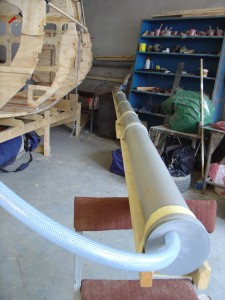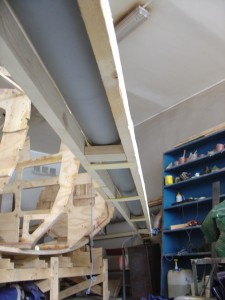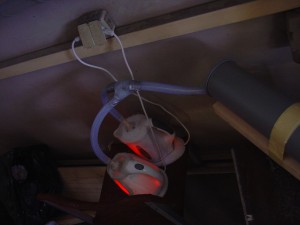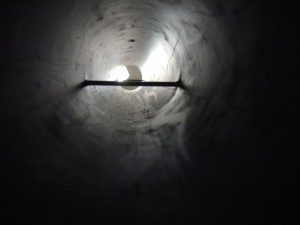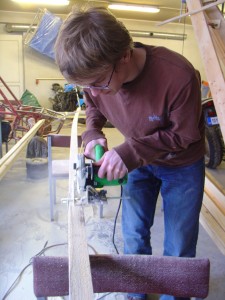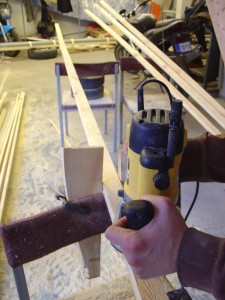Finished steam-bending a single stringer. We chose the worst one out of the stock, steamed it for an hour and bent it on. Did not hear a single cracking noise in the process, such wonderful bliss, the sound of silence. This also means that, doh, the steaming rig works. Now we are in the process of completing our fore transom design, building the interior, beveling bulkhead edges and roofing the cabin. Things are taking shape. Some photo-evidence:
- First tests of the steamtube. What better place to perform it than your kitchen. Only this time the end protrudes into the livingroom. The PVC pipes developed a significant bend when not fixed to the strongback. Took about 5 minutes before proper steam started coming out of the end. The pipe is 5 m long after all.
- Setup at our shop. The pipe is fixed to its strongback to keep it from deforming under heat. Testing showed that wrapping the pipe with rags is not necessary. Nor is it a must to pre-soak the wood. Perhaps so in hard bend situations, which ours is not. Saves us a ton of problems, otherwise we would have had to build a 5 m long bath for our planks. Using the tube as a soaker would have meant extra time spent.
- The strongback from below.
- The aorta of the steamer works like a charm. We now have a proper extention cord. This on-the-edge setup here is temporary. 1.7 L of water gets boiled with 30 minutes.
- Here you see the inside of the tube, we put nails trough the sides to keep the plank up in the flow of steam.
- Joosep trimming our newly bought stringer wood. We will also round-bevel the edges. Once applied it would be tedious to produce the rounds.
- Our heap of stringers. All cut to size, some bevelled.
- Bevelling with the router. Definition of woodworking power – fast, noisy and lots of dust.

